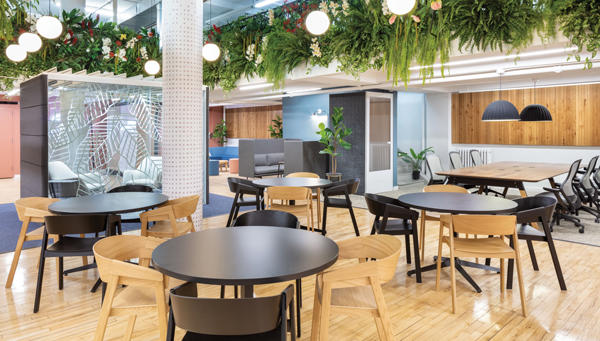Trending
Beyond WeWork
Co-working is here to stay and growing — despite the SoftBank-backed company’s struggles

WeWork’s valuation has collapsed, and now the company is selling off acquisitions. Knotel is grappling with nearly 1 million square feet of vacancies. WeWork and other co-working companies are slashing their workforces.
With headlines like that, you might think the whole sector is in trouble. But flexible office space isn’t going anywhere — and will likely continue expanding.
The number of co-working spaces worldwide is expected to double by 2025, according to estimates, with growth fueled by both gig-economy freelancers and enterprise companies looking for more freedom with their leases.
The co-working sector has been around for 30 years, kicking off when Regus — the pioneer of flexible office space, now known as IWG — launched in Brussels in 1989. Ten years later, co-working firm Nutopia opened a “work club” at 116 West Houston Street in New York, according to co-working news site Deskmag. WeWork opened its first location in 2010 and now has the largest footprint in the industry.
But the sector really took off around 2012, when there were an estimated 2,000 co-working spaces globally. That figure exploded to about 18,000 by 2019, according to data firm MarketInsightReports.
A new co-working space opens its doors in New York every 7.5 days. And it’s not just WeWork opening new locations — 65.3 percent of co-working spaces were opened by new businesses last year, according to data provider Coworking Resources.
Here is a closer look at some of the key numbers behind the flex office space industry.
100%
The projected increase in the number of co-working locations by 2025, to an estimated 36,000 globally, with growth driven by demand from entrepreneurs, startups and companies trying to replicate startup cultures and attract millennial workers.
$47B
The total value of WeWork’s outstanding lease commitments — equal to the company’s peak valuation in August. But that valuation plunged to $8 billion after preparations for the co-working giant’s failed initial public offering shone a spotlight on its leadership and finances. The company is now reportedly seeking to unwind as much as 15 percent of those leases worldwide.

A Knotel co-working space
800K
The square footage of Knotel’s New York City office space that is vacant or will become empty in 2020, according to a November Crain’s report. That’s about a third of the startup’s portfolio in the Big Apple.
43%
The percentage of co-working spaces in the black, according to Deskmag. The outlet found that co-working locations will make a profit if they have more than 200 members, are over a year old and don’t subsidize their sites.
1,500
The number of co-working spaces located outside of traditional office buildings, according to data provider Yardi Matrix. This trend is a sign that the industry is adapting and new business models are emerging — such as the new breed of gym/
co-working hybrids.

A Regus co-working space
93.2M
The total square footage that co-working spaces occupied in the top 50 U.S. office markets as of September, per Yardi Matrix. That includes 44.5 million square feet occupied by top players WeWork and Regus combined.
36
The average age of workers in flexible office spaces, according to a 2017 report in Deskmag. The average age is slightly lower in larger cities: In markets with a population of more than 1 million, it’s 34.5 years.
23%
Manhattan’s share of the total growth in co-working spaces in the U.S. from June 2018 to June 2019, according to CBRE. Now an estimated 3.6 percent of the island’s office inventory is occupied by co-working spaces.




